
Guide to interviewing AI Agents
What makes an AI Agent different from the typical chatbots you’ve used in the past? Is the impact on ROI really that high?
Learn More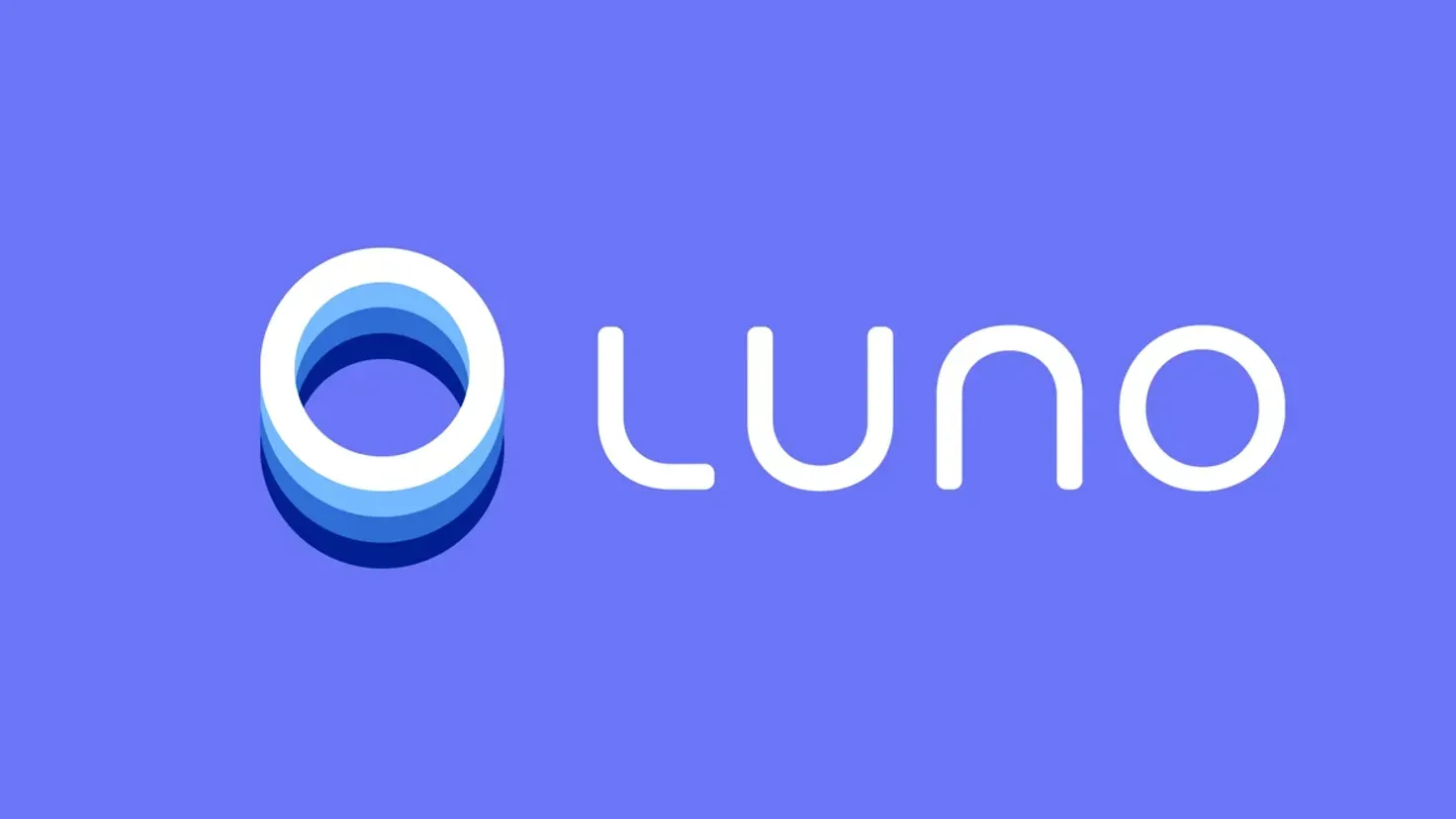

If you’re reading this, you’re most likely considering launching a chatbot for your business. Or you have already, and you’re trying to make it better.
Whichever the case, you’ll likely want it to:
That’s absolutely the right place to start. But in today’s competitive world, where customers expect so much more, is it enough?
For me, engaging chatbot experiences take a solid tech foundation and build brand experiences on top of it using the principles of conversational design.
So what exactly is conversational design? Very broadly, it’s the process of designing interactions between humans and machines in a way that mimics real-world conversations.
Customers are used to messaging. It’s become a fundamental part of the human experience. So when they interact with your chatbot, you want to take an experience that feels familiar to them, connect them to answers, and in the process, strengthen trust and affinity with your brand.
The best way to elaborate on this would be through my own experience building Luno’s bot, Toshi.
About 10 months ago, I got the opportunity to build a customer support bot at Luno, a leading global cryptocurrency brand. After exploring the chatbot offering of our CRM provider, and realizing that it didn’t offer the functionality we’d need, the stars aligned, we partnered with Ada, and I set off to build our chatbot, Toshi.
Luno’s mission is to put the power of cryptocurrency in everyone’s hands . More specifically, a billion people by 2030, or as soon as possible after that. When customers sign up for a Luno account, there’s an inherent brand promise about who we are as a company, and the journey we want to take with them. The destination is a better financial system for everyone, everywhere.
So with our ambitious growth strategy as a solid foundation, I wanted to build a bot that was equally ambitious. I wanted Toshi to be more than just a containment tool, I wanted it to be an extension of Luno’s brand. So I set out to make automation magic with conversational design.
While Luno is a global brand with more than 10 million customers in 40 countries, we decided to launch Toshi in a pilot phase to our South African customers in May 2022. It’s our most active live chat market, and with most of our support team based in Cape Town, South Africa, it made perfect sense.
During our pilot three months ago, and beyond, we’ve consistently maintained a containment rate of 78% and a CSAT of close to 70%, which I believe is significantly better than benchmarks in the fintech industry.
How did we do it?
This is my take on conversational design and some other things you can do to achieve maximum success.
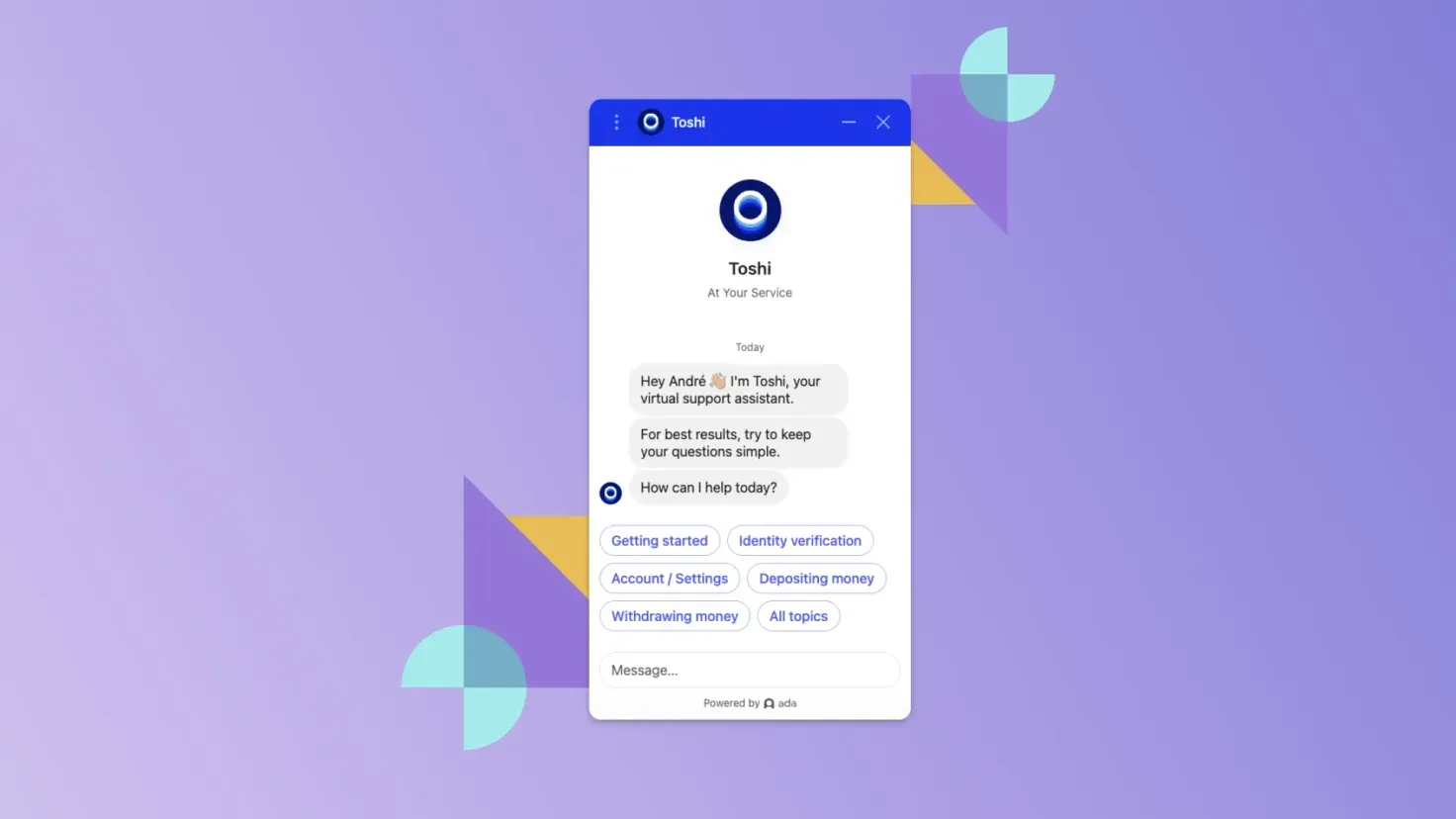
While your bot should never pretend to be a human, you don’t want your customers feeling like they’re interacting with a pocket calculator. Give your bot a friendly and catchy name. One that almost feels like a nickname.
While Luno is super focused on the crypto future, we wanted our bot name to be inspired by the crypto past. The name Toshi is derived from Satoshi Nakamoto , the pseudonym of the anonymous creator of bitcoin.
Your bot represents your brand, so align your tone of voice and persona as much to your brand manifesto as possible. I’m a big fan of using contractions in written content, as it mimics how people speak in the real world. Using them extensively in your bot replies will make them seem more friendly and authentic.
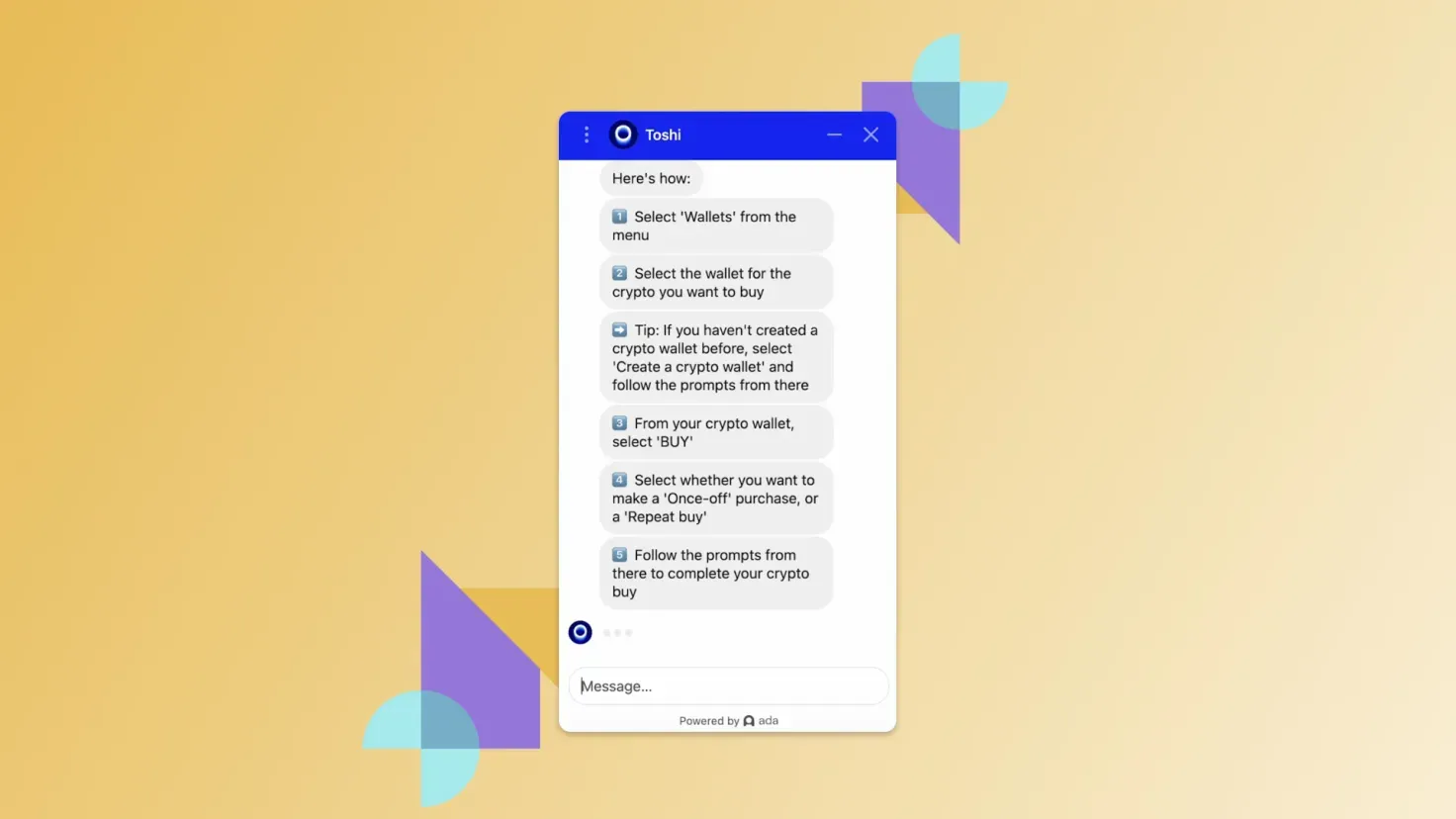
With conversational design, the rule of thumb is to keep bot replies as succinct as possible. But, if you have a complex product or service, they can become wordy despite your best efforts. In order to keep customers as engaged as possible, and break down lengthy replies, I believe using emojis sparingly, but effectively, is the way to go.
With Toshi, specifically on the FAQ-type replies, we use keycap emojis consistently on how-to steps.
Toshi is available to signed-in customers via a FAB button on the Luno Help Center, so we wanted our help content format to extend to our Toshi experience as well.
We use ‘Tip’ and ‘Note’ text blocks throughout our bot replies, applying the ➡️ emoji as a prefix, so they’re formatted as ‘➡️ Tip:’ and ‘➡️ Note:’.
It makes those content blocks stand out amongst replies that often need to be a bit long.
We also use the ✅ and ❌ emojis regularly to highlight things our customers can and can’t do in the Luno app. Other than that, we use emojis very sparingly to maintain consistency with our style guide.
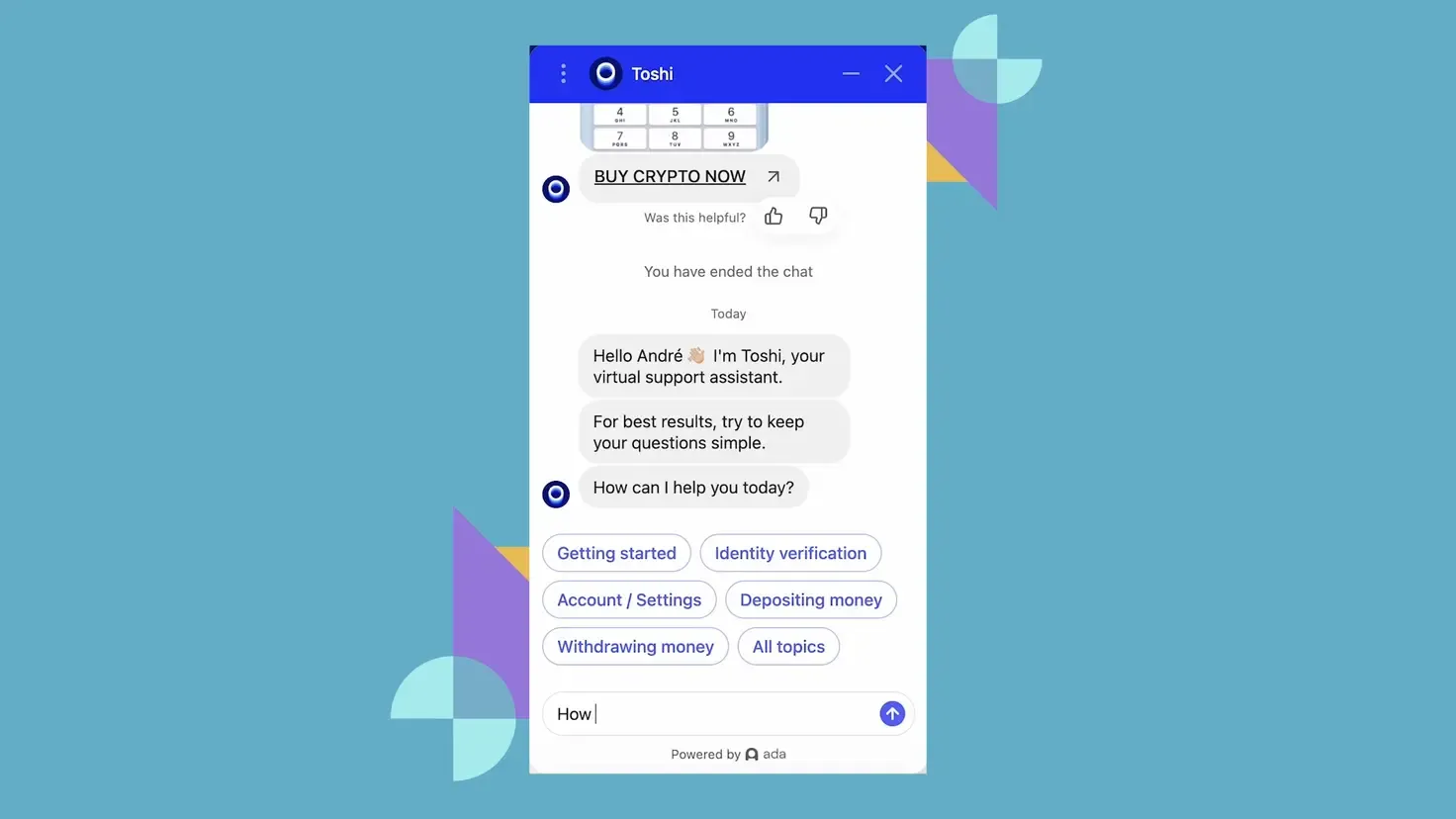
While Ada’s natural language processing and machine learning capabilities are extremely effective, we rely on quick reply buttons in a number of replies. We use them on the Toshi greeting, as well as on many other answers.
You want to give your customers as many options as possible to connect them to answers. It’s the reason they’re chatting with your bot. So if your bot answers one specific question, try to anticipate what other related questions your customer might have, and add quick reply buttons that answer those.
It keeps them engaged, and ensures that they have as many of their questions answered while chatting with your bot.
They’re more likely to come back to your bot if that’s the case.
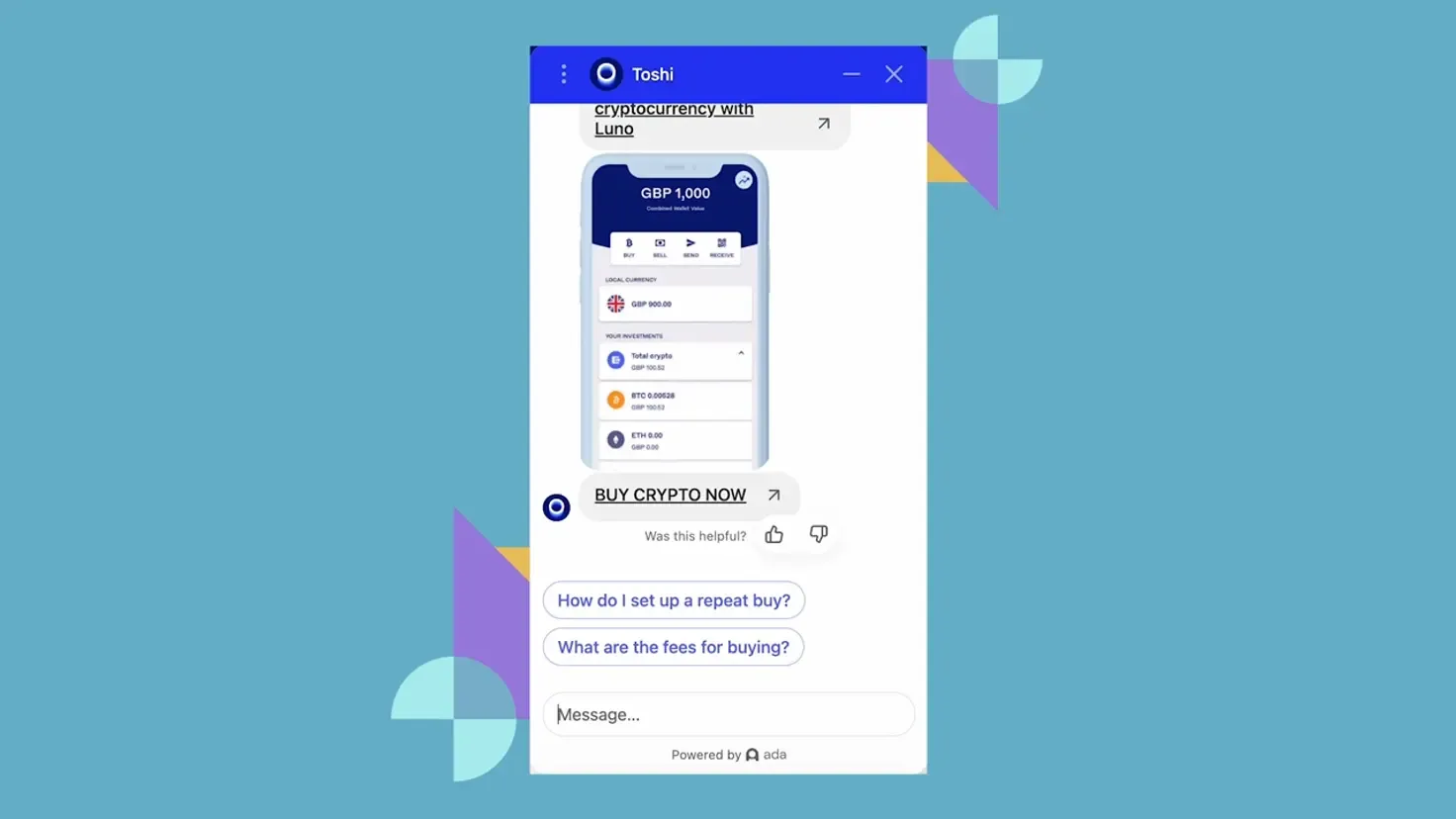
Your bot is an extension of your brand, so try to align it as much as possible to your brand expression. Luno’s brand uses illustrations quite extensively. It helps tell the Luno story. To carry that visual storytelling through to Toshi's replies, we include illustrations at the top of a number of replies using the ‘Picture’ content block.
With how-to answers, we also include app-specific GIFs illustrating the first few steps on how to do something in the app.
While your replies engage their mind, including visuals in a considered way engages their eye as well.
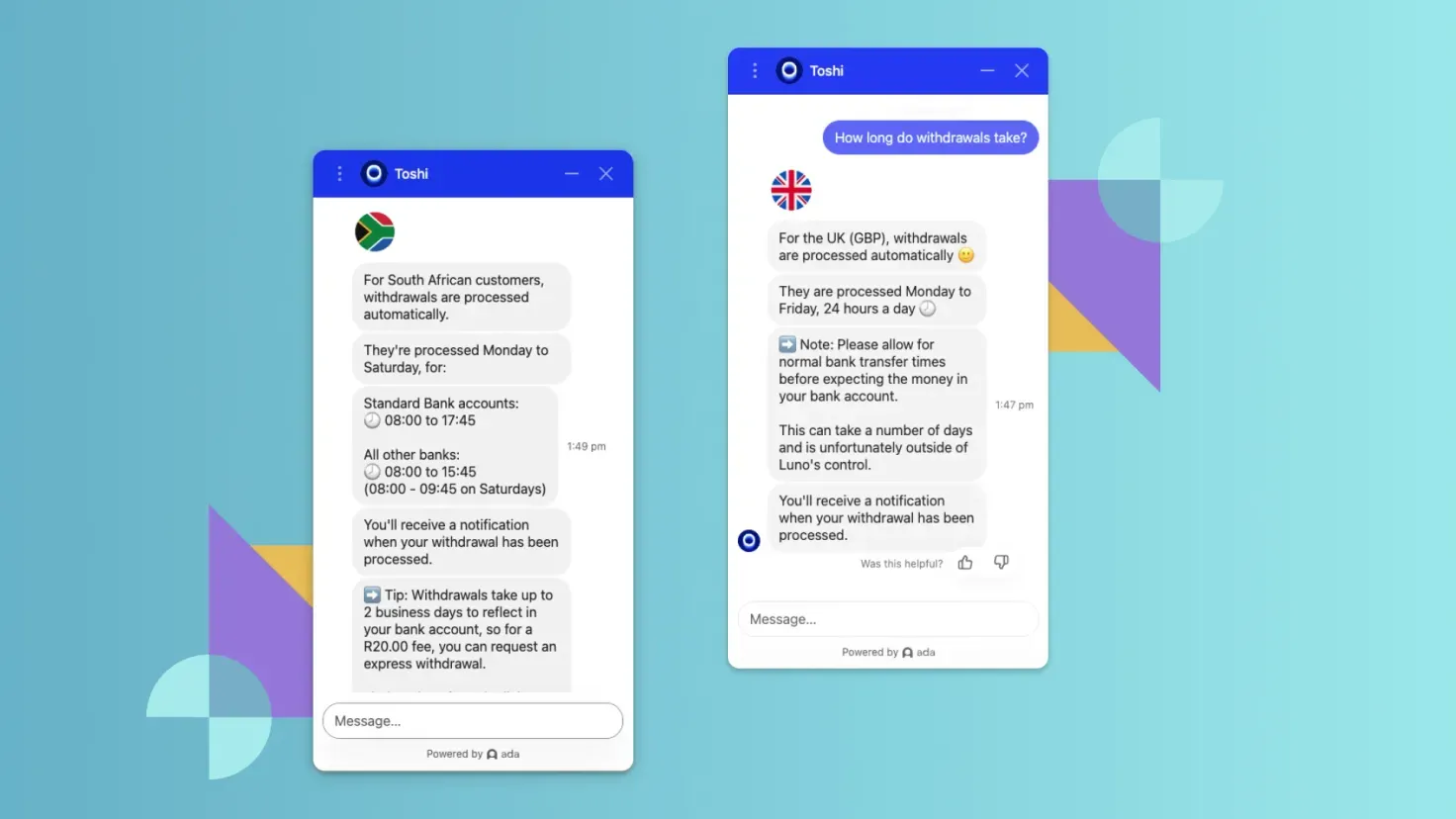
If your brand has a global footprint, and specifically if there are slight product differences based on country, try to localize your bot experience as much as possible.
With Toshi, as part of the bot greeting, an API call in the background establishes the customer's verified country and sets it as a variable.
Using that country-specific variable, we localize our answers, as well as the quick replies displayed at the greeting and on other answers, as much as possible.
Ada’s machine learning capabilities are really great. Your bot will continue learning the more customers engage with it, but to make sure your bot is as successful as it can be, your customer conversations need constant human eyes.
You can do that by setting up a team that consistently monitors the Improve section of Ada’s bot interface. That’s where you’ll pick up questions your bot isn’t answering properly and which answers aren’t helpful to customers. Use that function effectively to continuously improve your bot experience.
These are just some of the ways I believe you can create the best bot experiences for your customers. Remember that bots aren’t just there to connect customers to answers, they’re also there to deliver a brand experience. So while you’re building your bot, keep your brand in mind, and let that guide your work.
Accelerate time to value and get better ROI by partnering with Ada's Professional Services Team.
Learn more